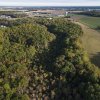While this year’s spring shorebird migration has ended in Delaware, with the shorebirds embarking for their Arctic nesting grounds fueled for their journey after consuming abundant horseshoe crab eggs, the horseshoe crabs continue to spawn along the shores of Delaware Bay.
Migrating shorebirds rely on horseshoe crab eggs to help sustain their long-distance migration from their wintering grounds as far away as southern South America to their Arctic nesting grounds – a one-way trip that can span more than 9,000 miles for some species.
The increasing Delaware Bay horseshoe crab population is managed under the Atlantic States Marine Fisheries Commission’s Adaptive Resource Management framework, an ecosystem-based approach that uses best-available science to support the migratory red knot population during their annual spring stopover. Under ARM management, the Delaware Bay horseshoe crab population has steadily increased over the last decade to an estimated 31.3 million crabs, comprising 21.9 million males and 9.4 million females. To learn more, go to asmfc.org.
Delaware allows a limited harvest of 162,136 only male horseshoe crabs, representing less than 1% of the scientifically estimated total Delaware Bay horseshoe crab population, with the harvested crabs used as bait for Delaware’s commercial conch fishery. Horseshoe crab harvest in the state is not allowed until June 8 after migrating shorebirds have left. Delaware does not have the horseshoe crab biomedical collection fishery that exists in other states, including New Jersey.
The red knot is listed as a threatened species under the federal Endangered Species Act and as an endangered species by the State of Delaware. The estimated red knot population that stops and feeds each spring along Delaware Bay has remained steady over the previous 10 years at approximately 40,000 to 50,000 birds annually as reported in the Red Knot Stopover Population Estimate for 2021 produced by the U.S. Geological Survey in cooperation with the Delaware Division of Fish and Wildlife and the New Jersey Division of Fish and Wildlife.
The USGS stopover population estimate is based on extensive, scientific red knot surveys. Numerous factors affect the red knot population in addition to horseshoe crab egg availability, including habitat loss, human disturbance, predator dynamics and climate change at wintering, migration and nesting areas. More information on shorebird research and monitoring, including the U.S. Geological Survey red knot stopover population report, is available at de.gov/shorebirds.
The DuPont Nature Center, managed by the Division of Fish and Wildlife and located near Slaughter Beach, provides great views from its large deck overlooking the Mispillion Harbor of a variety of wildlife. More information is available at de.gov/dnc, where the Mispillion Harbor Cam can be accessed for live views of wildlife visiting the area.
















































